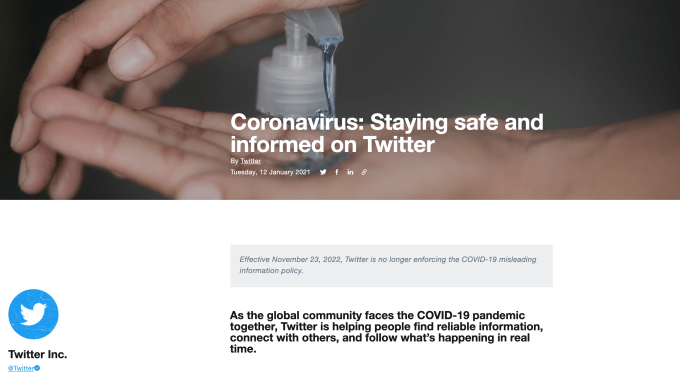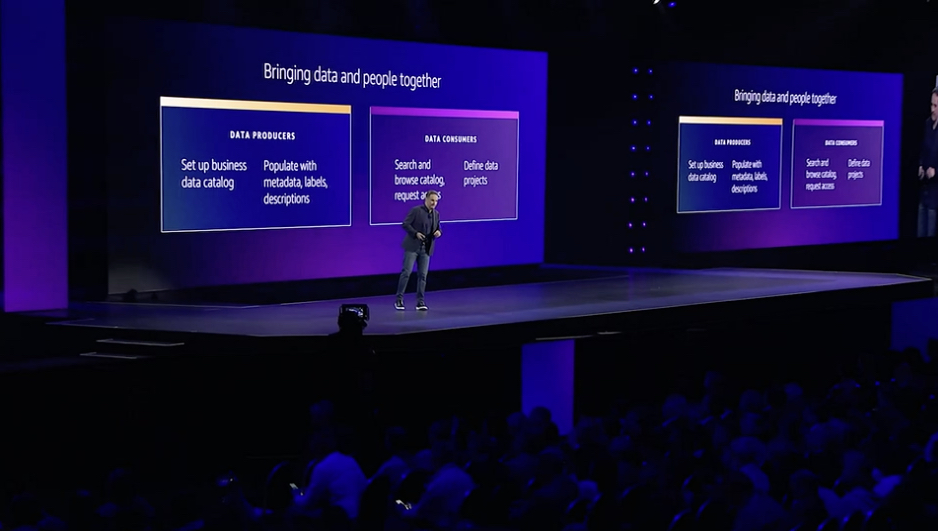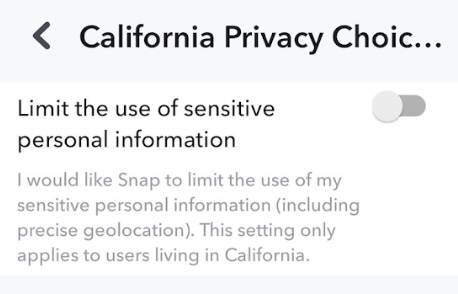Category: TECHNOLOGY
Amazon takes a step towards a zero ETL future with two announcements at re:Invent
Amazon made a couple of announcements today at AWS re:Invent in Las Vegas that helps move data management towards a future without the need for ETL.
ETL, extract transform load, is the bane of every data scientist and team as they try to get data into shape to put it to work. As AWS CEO Adam Selipsky explained, you may have data in a number of different places like your application usage data in a database and customer reviews in your data lake. Putting them together has been a significant challenge up until now.
AWS introduced Aurora zero-ETL integration with Amazon Redshift to give customers using the Aurora database and the Redshift data warehouse, the ability to move data without having to perform ETL on it.
“We’ve been working for a few years now and building integrations between our services to make it easier to do analytics and machine learning without having to deal with ETL,” Selipsky told the re:Invent audience.
“But what if we could do more? What if we could eliminate ETL entirely, that would be a world we would all love. This is our vision, what we’re calling a zero ETL future. And in this future data integration is no longer a manual effort,” he said.
“So today I’m excited to announce the preview of a fully managed new ETL free integration between Aurora and Redshift,” he said.
While he was at it, he announced a similar integration between Amazon Redshift and Apache Spark, the popular open source big data processing platform. It offers comparable ability to move data between the two platforms without having to extract, transform and load first.
The Redshift-Aurora integration is in preview. The Redshift-Apache Spark integration is available now across all regions.
Amazon takes a step towards a zero ETL future with two announcements at re:Invent by Ron Miller originally published on TechCrunch
Twitter says it’s no longer enforcing COVID-19 misleading information policy
Since billionaire Tesla owner, Elon Musk, took over the company last month, on closing his $44BN takeover and drastically slashing headcount, Twitter has stopped responded to press requests — and appears to have entirely shuttered its comms function — leaving Musk’s own tweets or posts like this one to its company blog as the only official outlet for confirming what it’s doing.
While it’s not clear why Twitter has abandoned enforcement of the COVID-19 policy there was plenty of nuance in how it could be interpreted — as well as a range of enforcement actions that might be applied by Twitter, including putting contextual or warning labels on tweets; reducing visibility and blocking sharing; all the way up to requiring removal of the tweet; and, for repeat offenders, suspending accounts.
All that enforcement has presumably now ceased under Musk — who, on taking over Twitter at the end of October, tweeted gleefully that “the bird is freed!”.
Roughly a month later, Musk’s approach to ‘liberating’ speech on the platform means he’s opened the door to conspiracy nonsense peddlers to amplify dangerous bs about COVID-19 on Twitter. So the backsliding is real.
See, for example, this wild claim tweeted last Friday by mega Musk fanboy, Kimdotcom — whose account has some 1.1M followers on Twitter — in which he heavily implies that “vaccines now kill more people than COVID”. His ‘evidence’ for that? A graph of “excess deaths” in Europe whose source, EuroMOMO, does not make any reference to causes of excess deaths.
The vaccines now kill more people than Covid? Look at the EU death numbers for the last 5 months:
155,343 above average deaths
70,015 Covid deaths
85,328 Non-Covid deaths
Twitter is no longer enforcing its policy against misleading information about COVID-19, per an update posted to an official company blog page.
Reuters spotted the change earlier — which said the change was effective as of last Wednesday.
“Effective November 23, 2022, Twitter is no longer enforcing the COVID-19 misleading information policy,” the social media company writes in a brief grey-on-grey note on a company webpage that’s still emblazoned with the title: “Coronavirus: Staying safe and informed on Twitter”.
No explanation was given by Twitter for the policy change.
Under its prior COVID-19 misinformation policy the company had said it would remove “demonstrably false or potentially misleading content that has the highest risk of causing harm”.
Grey on grey update freezing enforcement of Twitter’s COVID-19 misleading information policy (Screengrab: Natasha Lomas/TechCrunch)
Since billionaire Tesla owner, Elon Musk, took over the company last month, on closing his $44BN takeover and drastically slashing headcount, Twitter has stopped responded to press requests — and appears to have entirely shuttered its comms function — leaving Musk’s own tweets or posts like this one to its company blog as the only official outlet for confirming what it’s doing.
While it’s not clear why Twitter has abandoned enforcement of the COVID-19 policy there was plenty of nuance in how it could be interpreted — as well as a range of enforcement actions that might be applied by Twitter, including putting contextual or warning labels on tweets; reducing visibility and blocking sharing; all the way up to requiring removal of the tweet; and, for repeat offenders, suspending accounts.
All that enforcement has presumably now ceased under Musk — who, on taking over Twitter at the end of October, tweeted gleefully that “the bird is freed!”.
Roughly a month later, Musk’s approach to ‘liberating’ speech on the platform means he’s opened the door to conspiracy nonsense peddlers to amplify dangerous bs about COVID-19 on Twitter. So the backsliding is real.
See, for example, this wild claim tweeted last Friday by mega Musk fanboy, Kimdotcom — whose account has some 1.1M followers on Twitter — in which he heavily implies that “vaccines now kill more people than COVID”. His ‘evidence’ for that? A graph of “excess deaths” in Europe whose source, EuroMOMO, does not make any reference to causes of excess deaths.
The vaccines now kill more people than Covid? Look at the EU death numbers for the last 5 months:
155,343 above average deaths
70,015 Covid deaths
85,328 Non-Covid deathsShocking!!! Watch #DiedSuddenly pic.twitter.com/fcrHbpo6K8
— Kim Dotcom (@KimDotcom) November 24, 2022
A report made to Twitter, via its official misinformation reporting channel, of Kimdotcom’s tweet for spreading COVID-19 misinformation did not yield a response from the company last week. And that inaction is now apparently Twitter policy.
At the time of writing it was still possible to file a report via official Twitter channels of COVID-19 misinformation — see the below screengrab for its unamended policy statements — but, again, no action will presumably be taken on any such reports…

Screengrab: Natasha Lomas/TechCrunch
Per details of the framework the company had previously used for evaluating “potentially misleading” claims related to COVID-19 — to determine whether it would or would not take action on a particular tweet — it said for this type of tweet to qualify as a misleading claim “it must be an assertion of fact (not an opinion), expressed definitively, and intended to influence others’ behavior”.
“Under this policy, we consider claims to be false or misleading if (1) they have been confirmed to be false by subject-matter experts, such as public health authorities; or (2) they include information which is shared in a way that could confuse or deceive people,” it also previously stipulated.
Additionally, Twitter, pre-Musk, conceded that it would be unable to take enforcement action “on every Tweet that contains incomplete or disputed information about COVID-19” — saying it would therefore focus on addressing those claims “that could adversely impact an individual, group, or community”; with its greatest concern stated as being to curb misleading information that could increase the likelihood of exposure to the virus, or which might negatively impact health systems’ capacity to cope, or could lead to discrimination and avoidance of communities and/or places of business based on “perceived affiliation with protected groups”.
Given all that nuance around enforcement it’s not 100% certain Twitter, pre-Musk, would have taken down Kimdotcom’s tweet. But it’s 100% guaranteed it won’t do anything about any nonsense tweets about COVID-19 now with Musk in charge.
It’s not clear why the company would want to step back from enforcing a policy that was intended to help protect public health. But Musk has presented himself as a free speech absolutist and continues to actively seek to stoke culture wars on the platform he now owns.
He also recently said he would let scores of previously banned Twitter accounts return to the platform under a general amnesty — so he’s been tended toward pulling out any stops (though he did apparently draw the line at unbanning InfoWars’ conspiracy hate preacher, Alex Jones, implying distaste about lies he’d spread about massacred school children).
What Musk’s (near) free-for-all for disinformation will mean for Twitter users is a continued degradation of the quality of the information they’re being exposed to on the platform.
(See also: His disastrous paid verification scheme — which does not distinguish between people who’ve paid for a ‘Blue Check’ and accounts that got one under the prior actual identity-verification scheme, unless you click through to read some tiny, grey print.)
This free pass for disinformation seems likely to result in Twitter losing more users as more people decide they’ve had enough of being exposed to nonsense and take flight, seeking less toxic online spaces to socialize.
Advertisers are also unlikely to relish their brands being served up alongside misleading tweets about COVID-19.
Another looming question for Musk-Twitter is how regulators will respond to the amped up disinformation risk.
As we’ve written before, under its prior leadership Twitter had signed itself up to a series of voluntary commitments to fight the spread of disinformation on its platform in the European Union. As far as we’re aware, the company has not revoked its status as a signatory to this EU Code of Practice on Disinformation. But its participation in the initiative appears to only exist purely on paper now.
We’ve reached out to the European Commission for a response to Twitter’s policy change on misleading information about COVID-19 and will update this report with any response.
While the EU Code is not legally binding, and breaching it does not imply any sanctions, the Commission — whose initiative this is — is about to take on a major oversight role for large platforms under the incoming Digital Services Act (DSA). It has previously said adherence to the disinformation Code will be factored into its assessment of platforms’ compliance with the legally binding requirements of the DSA. And breaching that regime could incur penalties of up to 6% of global turnover.
Twitter says it’s no longer enforcing COVID-19 misleading information policy by Natasha Lomas originally published on TechCrunch
https://techcrunch.com/2022/11/29/twitter-covid-29-misleading-info-policy-change/
Blue Origin’s Shahir Gerges discusses a post-ISS orbital economy at TC Sessions: Space
NASA’s plan to decommission and deorbit the International Space Station (ISS) by 2031 creates another collaborative, multinational opportunity to provide a persistent orbital presence. Yet, the path to achieving that goal remains unclear.
Here’s the rub. No one knows exactly what that presence looks like, how it should be built, who would run it and how it would make money. These complex questions are why we’re thrilled that Blue Origin’s Shahir Gerges, director of business strategy for Orbital Reef, will join us for a fireside chat onstage at TC Sessions: Space on December 6.
These aren’t issues for engineers and astronauts to solve, although they must be involved in the discussion. Instead, it will take far-sighted business leaders who see where the market is headed. They’ll also need to build a compelling case for how a phenomenally expensive expedition, like a long-term space station, can reasonably be expected to pay for itself over a 10-year period.
What, who and how much will it take to build a safe, thriving commercial space economy? What can and should the world expect from privately operated successors to the ISS?
In a session called “Space Station Shake-up,” Gerges, an expert in the realm of commercial space stations, will share his perspective. Be in the room to hear what this space ace has to say about that and more.
Shahir Gerges serves as the director of business strategy for Orbital Reef, within Blue Origin. Orbital Reef is designed to be a mixed-use space station in low Earth orbit for commerce, research and tourism by the end of this decade. Focused on long-term financial sustainability for Orbital Reef, Gerges develops offerings to cultivate growth in new and emerging markets that would benefit from the on-orbit environment, including microgravity.
Before joining Blue Origin, Gerges worked as a strategy consultant at PricewaterhouseCoopers, where he advised industrial companies (including aerospace and defense) on market strategy decisions, internal operations strategy and multiple-deal due diligence. Gerges started his career at United Launch Alliance working in various engineering and strategy roles, as well as supporting government affairs.
Gerges holds a bachelor’s degree in aerospace engineering from Illinois Institute of Technology and an MBA from Georgetown University.
TC Sessions: Space takes place on December 6 in Los Angeles. Buy your pass today, join us to learn about the latest space economy trends, see cutting-edge technology, and network for opportunities to help you build a better, stronger startup.
Is your company interested in sponsoring or exhibiting at TC Sessions: Space? Contact our sponsorship sales team by filling out this form.
Blue Origin’s Shahir Gerges discusses a post-ISS orbital economy at TC Sessions: Space by Lauren Simonds originally published on TechCrunch
AWS launches DataZone, a new ML-based data management service
At its re:Invent conference, AWS today announced Amazon DataZone, a new data management service that can help enterprises catalog, discover, share and — most importantly — govern their data. The nifty part here is that AWS is using machine learning to help businesses build these data catalogs and generate the metadata to make it searchable.
“To unlock the full power the full value of data, we need to make it easy for the right people and applications to find, access and share the right data when they need it — and to keep data safe and secure.” AWS CEO Adam Selipsky said in today’s keynote.
The tool will provide users with fine-graned controls to manage and govern this data. That’s long been a major problem for enterprises, but it has only gotten harder as the amount of data has increased, ensuring that the right users have access to the right data, without compromising personally identifiable information, for example.
“Data zone enables you to set data free throughout the organization safely by making it easy for admins and data stewards to manage and govern access to data,” Selipsky explained. “And it makes it easy for data engineers, data scientists, product managers, analysts and other business users to discover, use and collaborate around that data to drive insights for your businesses.”
DataZone users will get access to a portal where they can set up their data catalog and define the taxonomy. Once DataZone is connected to a data source, it’ll use machine learning to populate its catalog with its metadata and users can add additional labels and descriptions as needed.
In a somewhat related announcement, AWS also yesterday launched its Digital Sovereignty Pledge, promising to give users the tools they need to control where their data is stored and accessed. DataZone does offer some of those controls, though its focus is obviously not on digital sovereignty.
AWS launches DataZone, a new ML-based data management service by Frederic Lardinois originally published on TechCrunch
https://techcrunch.com/2022/11/29/aws-launches-datazone-a-new-ml-based-data-management-service/
AWS adds automated agent monitoring to Amazon Contact Center
AWS introduced Contact Center, its customer service oriented product some years ago, putting it smack dab in the middle of enterprise applications. It also places the company in the position of competing directly with the likes of Salesforce and other established enterprise SaaS vendors.
When you are competing in that space, you need some powerful features, and today at AWS re:invent in Las Vegas, AWS CEO Adam Selipsky introduced three features to help bring more automation to managing Amazon Contact Centers running on AWS.
For starters, the company is introducing new performance management capabilities under Contact Lens for Amazon Connect designed to help managers identify CSAs who are having issues. The solution uses a combination of performance review forms and machine learning-driven voice analytics to review job performance.
In reality, it’s supposed to help identify agents who might need additional training or coaching. “These reduce the time the contact center managers spend identifying performance issues and helping to coach agents,” Selipsky explained today. Employees could see it differently (the bot says I didn’t answer correctly).
Somewhat along the same lines, AWS is also introducing a new capability to guide agents through customer interaction so they can resolve issues faster and in a more consistent manner. This should help reduce the number of mistakes, and the need for the prior feature (at least in theory).
Image Credits: AWS
The company also announced the general availability of Amazon Connect forecasting, which was originally announced in March this year. It’s designed to help contact center managers optimize agent schedules and ensure that they have the right people available.
“Connect is a great example of how the cloud is removing constraints to reimagine business challenges like delivering better customer service,” Selipsky said, something that SaaS companies have known all along, but for AWS, which tends to concentrate on infrastructure and platform pieces, it is a different approach.
AWS adds automated agent monitoring to Amazon Contact Center by Ron Miller originally published on TechCrunch
https://techcrunch.com/2022/11/29/aws-adds-automated-agent-monitoring-to-amazon-contact-center/
As BlockFi files for bankruptcy, how contagious will FTX’s downfall become?
Crypto lending platform BlockFi filed for Chapter 11 bankruptcy on Monday, just a few weeks after once-major crypto exchange FTX did the same. While BlockFi has been struggling to stay afloat for months now (and was even potentially going to be acquired by FTX), this latest filing signals that the bankruptcy contagion may run deeper than what the crypto industry sees at the surface.
“It is another example that the crypto winter is not over, and with the FTX debacle, it’s going to persist longer than previously expected,” Ric Edelman, founder of Digital Assets Council of Financial Professionals (DACFP) and author of “The Truth About Crypto,” said to TechCrunch.
“There is clearly a large amount of self-dealing and excessive leverage in the system, and until most of that is washed out through business failures, M&A and regulatory actions, the crypto winter will persist.” Ric Edelman, founder of Digital Assets Council of Financial Professionals
With BlockFi now in the midst of bankruptcy proceedings alongside FTX, Celsius, Three Arrows Capital and Voyager, others in the crypto space are wondering if and when the next crypto firm will find itself on the chopping block.
“The level of intercompany investment within the blockchain and crypto community is unusually high, so the level of contagion is likely to be much higher than what we saw within the traditional financial community in 2008-2009,” Sam Dibble, partner at Baker Botts, said to TechCrunch.
“Unfortunately, the complexity of these intercompany investments is not fully known at this point and so the companies themselves probably don’t know how badly they will be impacted,” Dibble added. “My guess is that the entire industry will be impacted somewhat by the FTX and BlockFi bankruptcies, with a significant number of severe casualties.”
As BlockFi files for bankruptcy, how contagious will FTX’s downfall become? by Jacquelyn Melinek originally published on TechCrunch
8 Great gifts for anyone working from home
This time two years ago, I changed up my annual gift guide feature’s focus from travel to working from home. After all, very few of us were doing much traveling at the time. I planned to switch back as the world reopened; it’s clear now, however, that for many of us, there is no going back to the before times.
The pandemic has had a number of lasting impacts in our lives, including how – and where – we work. But the transition from the office to home requires more than simply choosing not to get on that train every morning.
Creating a home office is a deliberate act. At its center is building a space where it’s possible to be every bit as productive in the absence of in-face meetings and awkward break room conversations. You need to build a place that will sufficiently separate work life from the personal for eight to 10 hours a day.
Here’s a handy gift guide for the person in life who needs a little extra push into that – or perhaps requires a refresh on some of the gear they purchased early into the pandemic.
This article contains links to affiliate partners where available. When you buy through these links, TechCrunch may earn an affiliate commission
1. Mac Studio
Image Credits: Brian Heater
This thing is a beast. This is that money-is-no-object gift to really, properly transform that spare room into a home office. There are far less expensive options out there – including several from Apple – but the Mac Studio is a beautiful and wildly powerful desktop.
And hey, while you’re picking up that little square computer, why not shell out for the $1,599 27-inch 5K Studio Display? It’s a heck of a one-two combo – though fair warning, the Studio Display’s webcam continues to be lacking for a system at that price point. Aside from that, picking up one of these will make you never want to go into the office (or, perhaps, leave the house) ever again.
Price: Mac Studio $1,999, Studio Display $1,599
Available from: Apple
2. Opal C1

Image Credits: Brian Heater
Speaking of webcams, I continue to get a lot of compliments on the picture quality from the Opal C1. The startup’s hardware had great image quality out of the gate that nearly rivaled a desktop DSLR, and subsequent software updates have only made things better. The company has worked out most of the beta bugs, with firmware that will work with all the major teleconferencing platforms and tweaks to image quality that make this is a hard one to beat.
Also worth a look is the Insta360 Link. The webcam is priced the same at $300, but the clever gimbal base makes for more dynamic shot tracking. That’s great for those who like to move around a bit more during remote meetings.
Price: $300
Available from: Opal
3. Shure MV7

Image Credits: Shure
I love this mic. I asked Shure to send me one for gift guide testing purposes and wound up writing a bit of a love letter to the thing in the meantime. As I shifted from in-person to remote podcasting during the pandemic, I’ve spent a lot of time trying to find the perfect USB mic. With design and sound-quality to rival its famous XLR counterparts, the directional MV7 is going to be a hard one to beat.
I recently recorded an NPR interview on the thing, and have turned it into my day-to-day teleconferencing microphone. It’s about as close as you’ll get to plug and play at this level, and the sound rivals studio quality recordings. Honestly, I can’t say enough good things about it. Pair this with the Opal cam and wow everyone on that Zoom call.
Price: $225
Available from: Amazon
4. Google Nest WiFi Pro

Image Credits: Brian Heater
The Google Nest WiFi Pro is a bit of an odd duck. Like some of the products above, it’s super easy to use. After years of wildly complicated router installs, it’s a breath of fresh air. Setup is effectively as easy as getting a smart speaker up and running. Also like the above, it may be a lot more powerful than most need. The system supports extremely fast download speeds via WiFi 6E – and there’s a good chance your existing ISP is going to be the biggest bottleneck.
I’ve happily ditched my ISP’s hardware for one and haven’t looked back. It’s reasonably priced at $200 (larger homes may want to go the mesh route with the two- or three-device bundle) and designed to blend in with its surroundings, much like the rest of the Nest line.
Price: $200
Available from: Google
5. Sony WH-1000XM5

Image Credits: Sony
Unless you live alone in the middle of nowhere, a good pair of noise canceling headphones are a must — and over ear models don’t come better than this. Sony continues to be my top pick in the category, courtesy of sound quality, comfort, battery life and active noise canceling. And bonus: when it’s time to get back on the road, these are a perfect carryon companion.
Price: $350
Available from: Amazon
6. Satechi Accessories

Image Credits: Satechi
I love me a good Satechi accessory. The company makes clever, well designed products that blend in well with their surroundings.
The 2-in-1 Headphone Stand With Wireless Charger is a particularly good desktop companion. The bar up top gives you a place to keep the over-ear headphones, with a USB-C port in the rear to keep them charged up. Below is a MagSafe compatible wireless charging pad for your iPhone or AirPods.
The 3-in-1 Magnetic Charging stand is a bit pricier. It’s great way to charge up the iPhone, AirPods and Apple Watch in one fell swoop. The MagSafe pad is also designed to keep the phone upright, so you can continue to use it while topping up the battery.
Price: 2-in1 Headphone Stand With Wireless, $80 | 3-IN-1 Magnetic Wireless Charging Stand, $120
Available from: Satechi
7. Keychron Q5 QMK Custom Mechanical Keyboard

Image Credits: Keychron
I asked my friend (and fellow TechCruncher) Frederic to recommend a nice, accessible mechanical keyboard for my work from home guide. He recommended the Keychron Q5 QMK Custom Mechanical Keyboard. The accessory is customizable, but it’s nothing too fancy, just a great feeling, terrific sounding, well-priced mechanical keyboard that will help your loved one reconnect with the joys of typing.
Price: $200
Available from: Keychron
8. Coway Airmega AP-1512HH Mighty

Image Credits: Coway
How about the person who seems to otherwise have their office in order? No one has ever regetted bringing a high-quality air purifier into their house. There are a lot of overpriced products and quite a bit of snake oil in this category, but the Coway Airmega AP-1512HH Mighty is a reasonably priced powerhouse. This HEPA filter is designed to cleaning a space up to to 874 sq. ft. in around half an hour, promising to reduce 99.999% of 0.01-micron particles.
In addition to removing pollen and odors, there’s a built in pollution sensor that showcases a room’s air quality in real time. It’s hard to imagine a better gift than the gift of breathable air.
Price: $220
Available from: Amazon
8 Great gifts for anyone working from home by Brian Heater originally published on TechCrunch
https://techcrunch.com/2022/11/29/8-great-gifts-for-anyone-working-from-home-remote-work/
Snapchat complies with the California Privacy Rights Act with a new toggle switch for users
Snapchat is adding a new privacy setting that enables users based in California to better protect their sensitive personal information. The company confirmed it’s rolling out a feature designed to comply with the California Privacy Rights Act (CPRA), which takes effect on Jan. 1, 2023, and applies to personal data collected on or after Jan. 1, 2022.
In November 2020, California residents voted to pass the CPRA, also known as Proposition 24, which builds on an earlier consumer privacy law, the California Consumer Privacy Act (CCPA) of 2018.
While the CCPA gave residents the right to access and delete personal information held by businesses and opt out of the sale of that data, the new law puts into place further requirements for businesses around their data collection practices and data retention. It additionally introduces new notification requirements and clarifies that users have the right to opt out of both the sharing and the sale of their personal information, while also adding a new category of “sensitive data.”
The law created the California Privacy Protection Agency to enforce the state’s privacy laws, as well as investigate violations, and assess penalties if warranted.
Consumers based in California, meanwhile, are to gain the right to not only know who’s collecting their information, but also be able to access it, correct it, delete it and transfer it, and to stop its sale and sharing, without being penalized as a result. As part of this, they’re also to gain the ability to access their options through “easily accessible” self-serve tools.
Snapchat’s implementation would seemingly address the latter as it presents a simple toggle switch under its Privacy Controls section in the app’s Settings screen. Here, users will be presented with a new option at the bottom of the list that reads “California Privacy Choices.”
A tap into this screen, (as spotted by competitive intelligence provider Watchful — see below image) reveals a new option to “Limit the Use of Sensitive Personal Information.” This page explains that enabling the setting would require Snapchat to limit the use of users’ personal info, including things like precise geolocation.
Image Credits: Watchful
The setting, however, is appearing in the Snapchat app for all U.S. users — even those who don’t live in the state.
Snapchat confirmed the new privacy feature is rolling out in compliance with the CPRA, but notes it only functions for those users in California.
The addition is interesting as it demonstrates how a popular mobile app has chosen to comply with the new legislation. And unlike on Facebook — where settings are buried, difficult to find, and constantly being relocated — Snapchat’s new privacy feature is relatively easy to find. All of the app’s settings are available from one main screen, organized into sections. So the new CPRA-compliant setting isn’t something users have to dig around to find.
Snapchat complies with the California Privacy Rights Act with a new toggle switch for users by Sarah Perez originally published on TechCrunch
Amazon introduces AWS Supply Chain to help bring order to supply chain chaos
Over the last several years, we’ve seen supply chain disruptions the likes of which we haven’t seen previously. The pandemic led to a series of issues that spiraled into a full-blown supply chain crisis.
Amazon wants to put AWS technology to work on the problem, and today the company announced a new supply chain solution at AWS re:Invent in Las Vegas.
AWS CEO Adam Selipsky talked about the supply chain disruptions in today’s keynote. “The last few years have highlighted the importance of supply chain resilience from baby formula shortages to ships circling ports unable to unload, the disruptions have been widespread. Addressing supply chain issues around inventory is especially critical,” he said.
And that is an area where the company wants to put its strengths to work with a new solution called AWS Supply Chain.
“So today I am thrilled to announce the preview of AWS Supply Chain, a new cloud application that improves supply chain visibility, delivers actionable insights to help customers mitigate supply chain risks and lower costs. With AWS Supply Chain you get a unified view of your supply chain data, ML-powered insights, recommended actions and built-in collaboration capabilities, so you can react quickly to unexpected issues,” Selipsky explained.
Selipsky says that the solution is designed to strip away the complexity associated with managing this kinds of data. “First, with just a few clicks you connect your supply chain data from SAP, EDI or other sources like warehouse management or order management systems. Then AWS Supply Chain automatically sets up a data lake using ML models that have been pre-trained to understand, extract and transform disparate incompatible data into a unified data model.”
It then lets you display your supply chain data on a map, and drill down on specific locations to find where inventory is and how you can eliminate issues in any particular location, all while communicating with supply chain managers across your organization from the same tool.
Image Credits: AWS
“AWS supply chain helps you mitigate risk and lower cost by giving you a unified supply chain and surfacing the best actionable insights all with a single pricing and no upfront licensing fees,” he said — and he promised as is often the case with AWS annoucements, this is just the start.
Over time the company plans to add additional functionality and linkages. “And this is just the beginning. We’re going to continue to invest here and work to solve your hardest supply chain problems,” he said.
AWS Supply Chain is available in preview starting today.
Amazon introduces AWS Supply Chain to help bring order to supply chain chaos by Ron Miller originally published on TechCrunch
As tech companies seek to limit losses, a reminder of how far some have to go
The 2022 perspective that startups should cut their losses and chart a clearer path to profitability does not only apply to upstart tech companies. After a multiyear spending binge, larger technology companies are also pulling back on costs.
For some major tech concerns, the cuts have come in the form of explicit layoffs and staffing reductions created by not backfilling departing employees, while other tech shops are cutting costs, including perks and related employment-enticement efforts. But while some major technology companies are trimming spending to bolster profitability, others remain miles away from making money.
The Exchange explores startups, markets and money.
Read it every morning on TechCrunch+ or get The Exchange newsletter every Saturday.
Such is the case of Bilibili, a Chinese online video service with a social component. Today, shares of Bilibili are performing strongly, up sharply after the company reported better-than-anticipated Q3 earnings results. Naturally on the hunt for some good news amid a year of bearish headlines, compressing multiples and chaos, we took a look.
What we found was a business farther from profitability than we expected. The Chinese company, worth around $5 billion today per financial databases including Yahoo Finance, has done a fantastic job capturing a growing audience in its home market and keeping those netizens engaged. But when it comes to building a more profitable company — its stated goal, as we’ll examine shortly — it has much work ahead of it.
That shares of Bilibili are up more than 20% today is good news, albeit in a limited sense. The company’s shares trading on U.S. exchanges crested the $150 per-share threshold in booming 2021. They closed yesterday at $12.59 per share, before today’s uptick of nearly $3 per share.
The work ahead of Bilibili to reach profitability — measured in GAAP terms, mind — reminds us of other tech companies that saw their values skyrocket and losses stick during the 2021 era. Some of those concerns, like Twilio, are still growing quickly, and at scale, but their losses appear to have set a weight around their shoulders, compressing their total value.
Put more simply, Bilibili’s unprofitability tells us that unwinding 2021’s excesses will take years, in some cases. For already-public tech companies, this can mean a painful march to the black. For startups, it serves more as a warning about what happens when growth fails to generate sufficient operating leverage.
As tech companies seek to limit losses, a reminder of how far some have to go by Alex Wilhelm originally published on TechCrunch



